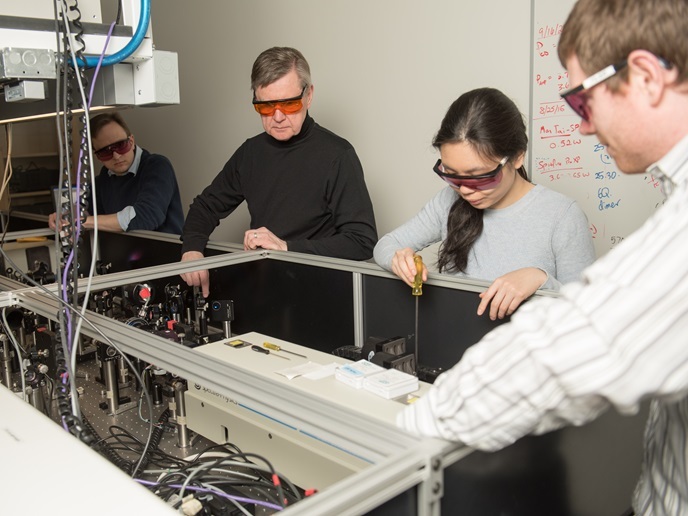Quantum leap forward in understanding biological processes
The PAPETS (Phonon-Assisted Processes for Energy Transfer and Sensing) project focused on two key biological processes: photosynthesis (the process by which green plants use sunlight to synthesise nutrients from carbon dioxide and water) and olfaction (the capacity to recognise and distinguish different odours). Understanding how photosynthesis works at the most fundamental level could result in the design of much more efficient solar cells, while better artificial odour sensing technologies could be used to detect impurities or pollution in the food, water, cosmetics or pharmaceuticals industries. Lessons from nature ‘Unlike seeing, hearing or touching, the sense of smell is difficult to reproduce artificially with high efficacy,’ explains PAPETS project coordinator Dr Yasser Omar, from the Instituto de Telecomunicações in Portugal. ‘We were able to prove that the internal vibrations of a molecule are a signature of its odour, and we believe that this could involve the tunnelling of electrons.’ These findings, achieved through rigorous scientific experiments and study of the behaviour of Drosophila flies, were then demonstrated at various scientific exhibits, helping to communicate complex science to a wide audience. ‘Our exhibits provided a guided and interactive explanation of the likelihood that our sense of smell uses vibrations of odorants in order to distinguish fragrances,’ explains Omar. ‘We let visitors smell fragrances with the same structure but enriched with different levels of hydrogen isotopes. These compounds have a similar shape but vibrate at different frequencies. Those who were able to differentiate the isotopes were therefore able to smell molecules which have a very similar shape but vibrate differently – in effect they smelled vibrations!’ Another project breakthrough involved the study of a vibronic mechanism that explains how energy is transported in photosynthetic complexes. This was found to play an essential role in charge separation process in organic photovoltaics, and the results of this were published in the journal ‘Nature Communications’ in December 2016. ‘This suggests the possibility that the vibronic coupling concept – developed from the study of photosynthesis – could be exploited to improve solar cells,’ says Omar. The project also examined how photosynthetic organisms use delicately built antennas to harvest energy from sunlight. After capturing the light, its energy is rapidly transferred within the antenna, which retains functionality despite operating in a fluctuating environment. The project team was able to accurately record this process in action for the first time. These unique insights could eventually be applied in the design of man-made solar antennas. Applying quantum physics These breakthroughs were made possible through the application of quantum physics, and in particular, the principle of ‘superposition’. This stipulates that a particle can be described as being in two different states simultaneously. Superposition – though rather mindboggling to the non-expert – is based on solid science. Superposition contributes to more efficient energy transport,’ says Omar. ‘An exciton, a quantum quasi-particle carrying energy, can be transferred faster along the photosynthetic complex due to the fact that it can travel through different paths simultaneously. What’s surprising and exciting is that these quantum effects have been observed in biological complexes, which are large, wet and noisy systems. Superposition is fragile and we would expect it to be destroyed by the environment.’ The PAPETS project, which was completed in November 2016, has helped to further advance the understanding of the role of quantum effects in biological processes, namely in photosynthesis, and the further insights gained have important practical applications. The frontier between biology and quantum physics remains an area rich in undiscovered scientific value.







